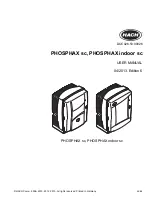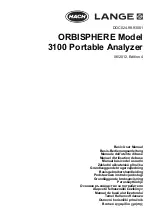
34
SUPERtrol-I LE Flow Computer
7.3 Linearization Table
7.3.1 Linearization Table General Information
The Linearization Table is used when the flow input device gives a nonlinear input signal. The unit
uses up to 16 different points, as entered by the operator, to form a curve for linearizing the input
signal.
Notes:
1) A minimum of three points must be set up.
2) If "0" is entered for the frequency of any point other than point 1, the Flow Computer assumes
there are no more points above the points that preceded them. The display will advance to the
next setup prompt.
3) If the input frequency is above the highest or below the lowest frequency programmed, the unit
will use the last known point for the K factor in computing the resulting actual flow.
4) Frequency- Point pairs should be entered in ascending order of frequency.
7.3.2 Linearization Table for Pulse Inputs
The linearization table for pulse inputs programming is quite simple when values of frequency
and K-Factors are known. The Flow Computer asks for 16 different frequencies (Freq) and 16
corresponding K factors (K). It then uses this data to determine what the actual flow is for any
given input frequency. Usually the necessary data is provided with the flowmeter.
7.3.3 Linearization Table Interpolation
The Linearization Table routine uses the entered data to determine the K factor for any given input
frequency signal. This is done by taking the closest data points above and below the input signal,
then using those points to interpolate the K factor (correction factor), then calculating the flow
from the data. Below are the formulas.
Parameters:
Determine closest point above input signal
signal = X, K factor (correction factor) = KA
Determine closest point below input signal
signal = Y, K factor (correction factor) = KB
Let input signal = H,
unknown K factor (correction factor) = KN
To find KN use this formula:
KAKA
KN
KB
Y H X
Input
K factor
H - Y
X - Y
• (KA - KB) + KB = KN
















































